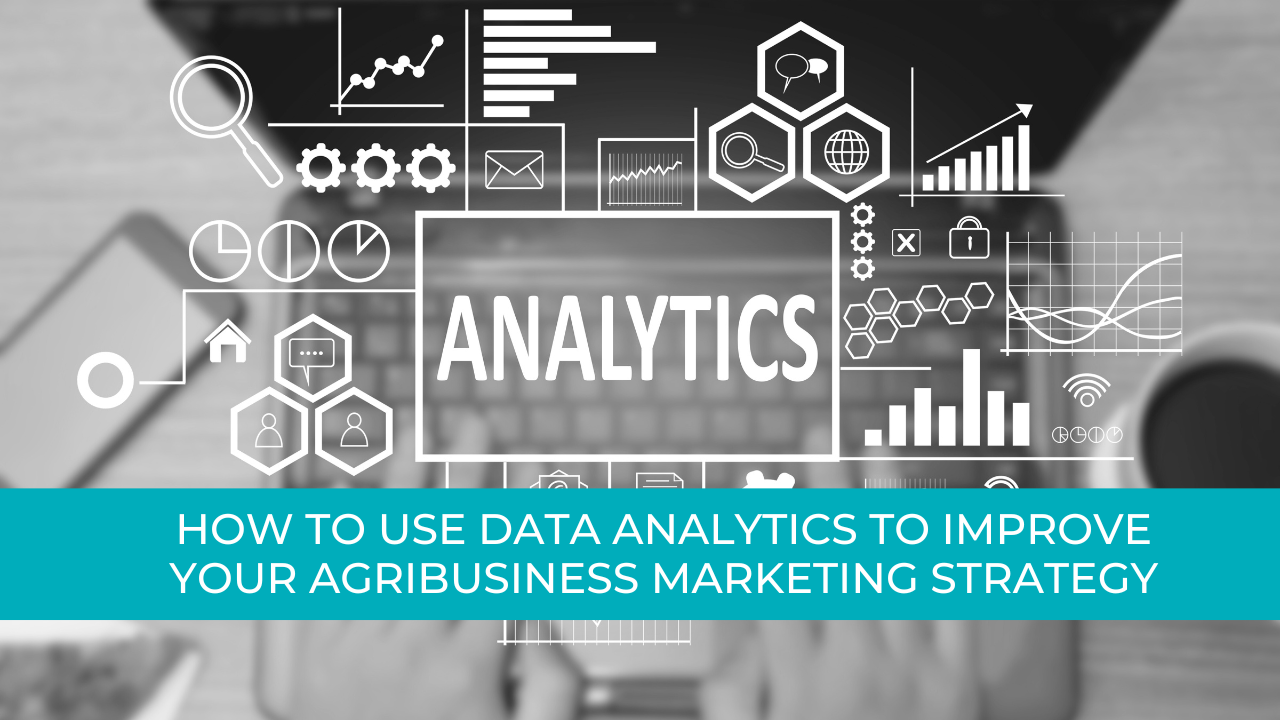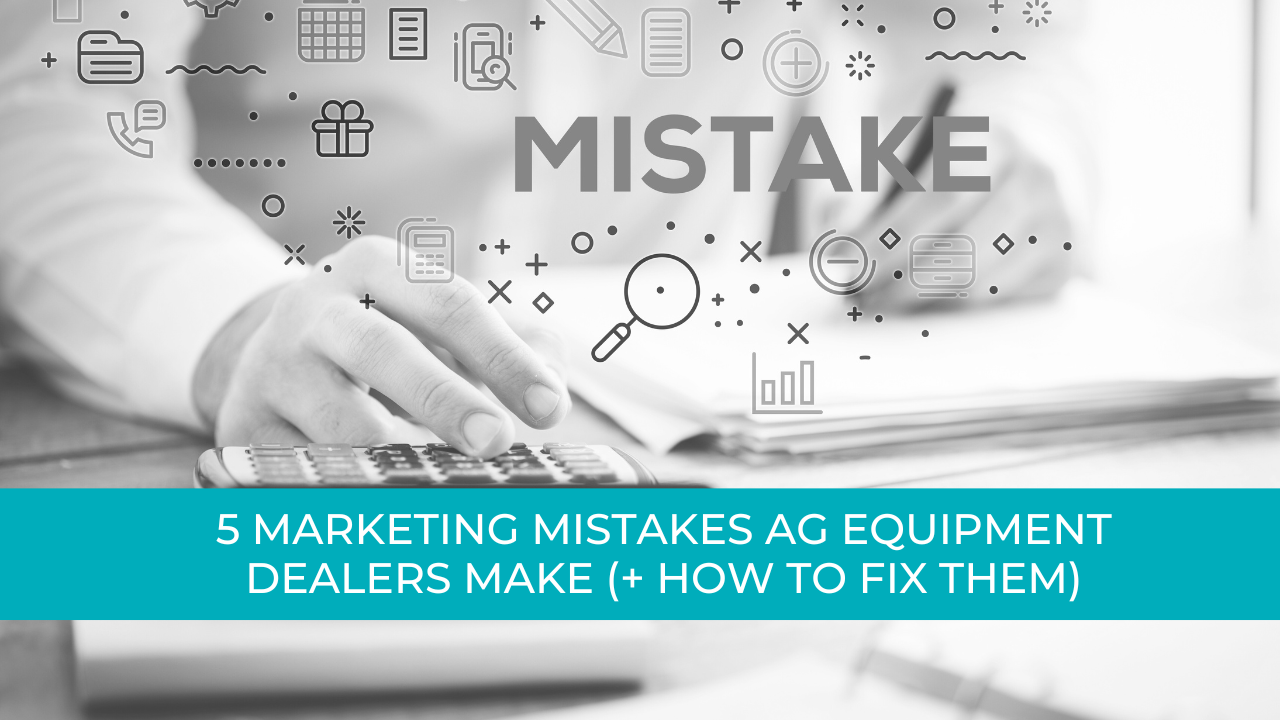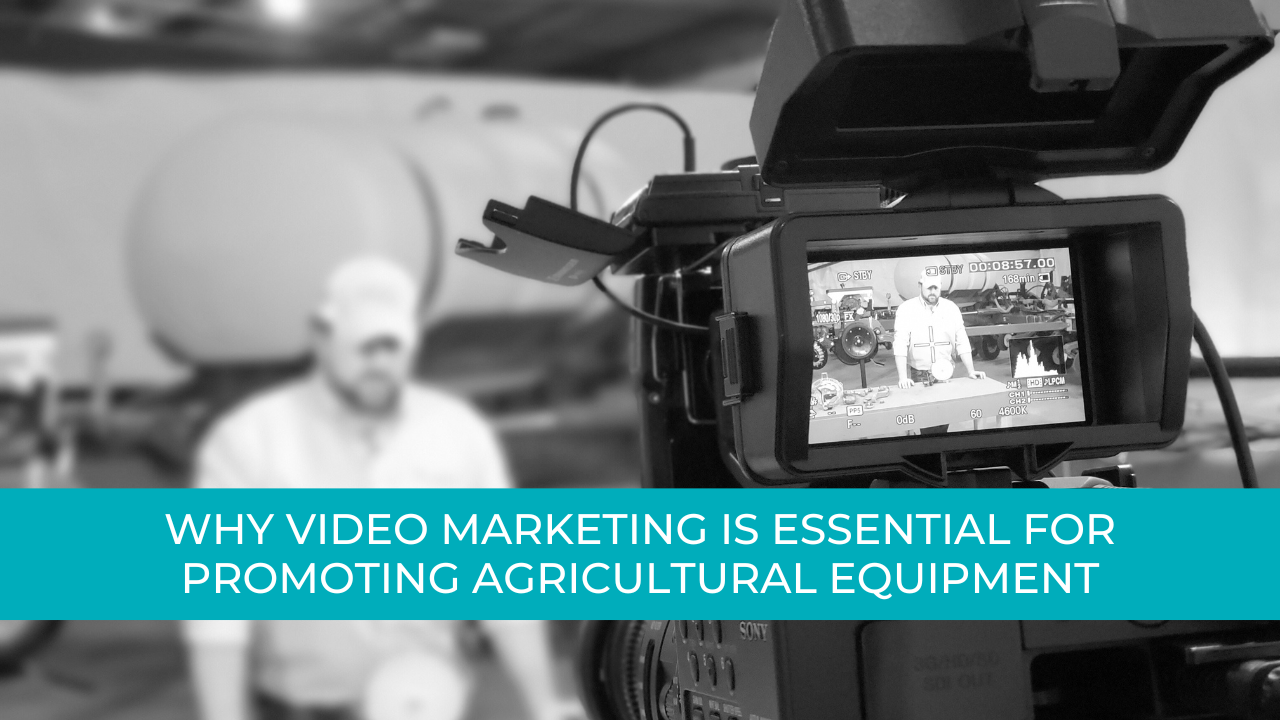Agtivation Blog
What's New In The Digital Ag World
Forecasting Agricultural Equipment Demand With Predictive Analytics
Forecasting agricultural equipment demand with predictive analytics is like predicting the
weather in a hurricane—it's complex yet essential. You must consider various factors that
influence demand, from historical patterns to shifting market trends. Understanding these
elements can greatly impact your operational efficiency and resource management. So, how do
you harness these insights to stay ahead in the competitive agricultural landscape? Let's
explore the intricacies of this predictive approach.

Key Takeaways
● Predictive analytics enhances demand forecasting by analyzing historical data and
market trends, leading to more accurate equipment needs assessments.
● Incorporating diverse data sources, including sales history and market dynamics,
facilitates comprehensive analysis and timely adjustments in equipment demand.
● Engaging stakeholders, such as farmers and suppliers, provides valuable insights that
refine forecasting models and align inventory with market demands.
● Seasonal trends and equipment lifecycle considerations are crucial for anticipating
purchase timings and ensuring timely investments in agricultural machinery.
● Advanced analytics tools enable proactive inventory management and strategic
planning, optimizing resource allocation and reducing costs associated with equipment
procurement.
Understanding Predictive Analytics in Agriculture
While you may not think of numbers and data when it comes to farming, understanding
predictive analytics can greatly enhance your agricultural business. By focusing on data
interpretation, you can analyze trends and patterns that affect equipment demand. This analysis
helps you make informed decisions, ensuring you're ready for peak seasons. Technology
integration plays a crucial role; utilizing advanced tools can streamline data collection and
processing, making your insights more accurate. You'll find that by embracing predictive
analytics, you're not just reacting to market changes but proactively shaping your strategies.
This approach allows you to optimize your inventory, reduce costs, and ultimately improve your
bottom line, ensuring your business remains competitive in an ever-evolving agricultural
landscape.
Importance of Demand Forecasting for Agricultural
Equipment
Predictive analytics gives you a solid foundation for understanding trends, but it's demand
forecasting that truly helps you plan for the future of your agricultural equipment needs.
Recognizing the demand significance allows you to make informed decisions, ensuring you
invest in the right machinery at the right time. By employing effective forecasting strategies, you
can anticipate market shifts and consumer preferences, reducing the risks of overstocking or
understocking equipment. This proactive approach not only optimizes your inventory
management but also enhances your competitiveness in the market. Ultimately, accurate
demand forecasting empowers you to align your resources with actual market demands, leading
to improved operational efficiency and better financial outcomes for your agricultural business.
Key Factors Influencing Equipment Demand
Understanding the key factors influencing equipment demand is essential for making informed
decisions in your agricultural business. The equipment lifecycle plays a vital role; as machinery
ages, you may need to upgrade or replace it to maintain efficiency. Additionally, market
fluctuations can markedly impact demand. For instance, changes in commodity prices can shift
your focus, prompting you to invest in specific equipment to boost productivity. Seasonal trends
also affect when you'll want to purchase new machinery, as certain times of the year are busier
than others. By closely monitoring these factors, you can better anticipate your equipment
needs, ensuring you're well-prepared to adapt to the ever-changing agricultural landscape.
Utilizing Historical Data for Accurate Predictions
When you analyze historical trends, you reveal valuable insights that can shape your equipment
demand forecasts. Understanding seasonal demand patterns helps you anticipate fluctuations
and make informed decisions. By leveraging past data, you can enhance the accuracy of your
predictions and better align your inventory with market needs.
Historical Trends Analysis
Analyzing historical trends in agricultural equipment demand can be a game changer for your
business. By understanding past demand fluctuations, you can make informed decisions that
drive success. Here are three key benefits of leveraging historical data:
1. Identify Patterns: Recognizing consistent trends helps you anticipate future needs and
prepare your inventory accordingly.
2. Enhance Planning: With historical insights, you can optimize your purchasing strategy,
reducing overstock and stockouts.
3. Improve Marketing Strategies: By knowing when demand peaks, you can time your
promotions effectively, reaching customers at the right moments.
Ultimately, integrating historical trends analysis into your forecasting will empower you to react
proactively, ensuring your business remains competitive and responsive to market changes.
Seasonal Demand Patterns
By recognizing seasonal demand patterns, you can make more accurate predictions for your
agricultural equipment needs. Analyzing historical data reveals essential seasonal trends that
drive demand fluctuations throughout the year. For instance, you might notice an uptick in
equipment purchases during planting and harvest seasons. By identifying these patterns, you
can anticipate when your inventory will be in high demand, allowing you to stock strategically.
Additionally, understanding how weather events impact these trends can further refine your
forecasts. Implementing this knowledge not only helps you meet customer needs more
effectively but also optimizes your supply chain management. In turn, this can enhance
profitability and guarantee you're prepared for the busy seasons ahead.
How Weather Patterns Affect Equipment Needs
Weather patterns play an essential role in determining your agricultural equipment needs.
Seasonal predictions can greatly influence crop growth cycles, affecting when and how you
prepare your fields. By understanding these patterns, you can optimize your equipment use and
guarantee you're ready for changing conditions.
Seasonal Weather Predictions
As seasons change, so do the demands for agricultural equipment, making it essential for you
to stay ahead of weather patterns. Understanding how weather impacts your operations allows
for precise seasonal adjustments. Here are three key factors to evaluate:
1. Rainfall Patterns: Heavy rains may require additional tillage equipment, while dry spells
could shift focus to irrigation tools.
2. Temperature Fluctuations: Warmer winters might lead to earlier planting, pushing you
to prepare planting equipment sooner.
3. Frost Dates: Late frosts can alter your harvesting schedule, impacting the need for
specific machinery.
Crop Growth Cycles
Understanding crop growth cycles is crucial for making informed decisions about the equipment
you'll need throughout the year. Different weather patterns can greatly impact your crop
management strategies, influencing when to plant, irrigate, and harvest. For instance, a wet
spring might delay fieldwork, requiring more efficient machinery to catch up. Seasonal changes
also affect yield predictions; unexpected frosts or droughts can alter your expectations, making
it essential to adapt your equipment choices accordingly. By closely monitoring weather
forecasts and understanding these cycles, you can better anticipate equipment needs, ensuring
you're prepared for each stage of growth. This proactive approach helps maximize productivity
and ultimately improves your overall farm success.
The Role of Market Trends in Demand Forecasting
Market trends play an essential role in demand forecasting, especially in the agricultural sector,
where consumer preferences and global events can shift quickly. By conducting thorough
market analysis, you can identify demand signals that indicate future equipment needs. Here
are three key aspects to take into account:
1. Consumer Preferences: Understanding what farmers are looking for helps you tailor
your offerings.
2. Technological Advancements: Keeping an eye on new technologies can help predict
shifts in equipment demand.
3. Global Events: Economic changes or climate conditions can greatly influence
agricultural trends.
Implementing Predictive Analytics Tools
When you start using predictive analytics tools, you gain valuable insights that can transform
your approach to demand forecasting. These tools rely on data analysis to identify patterns and
trends, allowing you to make informed decisions about your equipment inventory. By integrating
technology into your forecasting process, you not only streamline operations but also enhance
accuracy. You'll find that leveraging historical data alongside real-time analytics helps you
anticipate market shifts, ensuring you meet customer demands effectively. Additionally,
embracing these tools encourages a proactive mindset, enabling you to adapt quickly to
changes in the agricultural landscape. Overall, effective implementation of predictive analytics
tools can markedly optimize your operational efficiency and strengthen your market position.
Collaborating With Stakeholders for Better Insights
Collaborating with stakeholders can greatly enhance your insights into agricultural demand
forecasting. By engaging with various parties, you can gather valuable perspectives that refine
your analysis. Here are three ways to foster stakeholder engagement for collaborative insights:
1. Regular Meetings: Schedule consistent check-ins with farmers, suppliers, and industry
experts to discuss trends and challenges. Their firsthand experiences can reveal vital
data.
2. Surveys and Feedback: Use surveys to gather opinions from stakeholders about their
needs and expectations. This can guide your forecasting efforts.
3. Data Sharing: Create a platform for stakeholders to share relevant data. This collective
information enriches your understanding of market dynamics and improves accuracy.
Frequently Asked Questions
What Types of Agricultural Equipment Benefit Most From Demand
Forecasting?
When you consider demand forecasting, harvest machinery and irrigation systems stand out.
Predicting their needs helps you optimize inventory, reduce costs, and guarantee timely
availability, ultimately leading to improved efficiency and productivity on your farm.
How Can Small Farms Implement Predictive Analytics Effectively?
To implement predictive analytics effectively, you'll need to focus on data collection and
technology adoption. Start by gathering relevant data, then leverage user-friendly tools to
analyze it, enhancing your decision-making process and operational efficiency.
What Are Common Challenges in Forecasting Equipment Demand?
Forecasting equipment demand can be tricky. You'll face challenges like data accuracy and
market volatility, making it hard to predict needs accurately. Focusing on reliable data sources
can help you navigate these hurdles effectively.
How Often Should Demand Forecasting Be Updated?
You should update demand forecasting regularly, ideally quarterly. By analyzing historical data
and market trends, you'll adjust your strategies effectively, ensuring your business remains
responsive to changes and can meet customer needs promptly.
Can Predictive Analytics Be Used for Seasonal Equipment Rentals?
Think of seasonal trends as a dance; predictive analytics helps you lead. By analyzing past
rental models, you can better anticipate demand, ensuring you've the right equipment available
for peak seasons and maximizing your rental opportunities.
Final Thoughts
Leveraging predictive analytics for forecasting agricultural equipment demand isn't just theory;
it's a proven strategy that enhances decision-making. By examining historical data and
recognizing market trends, you can accurately anticipate equipment needs, ensuring you're
never caught off guard. This proactive approach not only minimizes risks related to overstocking
or understocking but also positions your enterprise to thrive in a rapidly changing agricultural
landscape. Embracing these insights leads to greater operational efficiency and sustained
competitive advantage.














